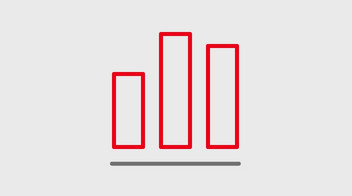Air quality control
Absolute particulate emissions as of Dec 31 / t | 2023 | 2022 | 2021 |
Passenger transport | 444 | 303 | 330 |
Freight transport | 3,266 | 3,430 | 4,965 |
Other transport | 10 | 4 | 4 |
Stationary facilities | 142 | 125 | ‒ |
Total | 3,862 | 3,862 | 5,299 |
Combustion-related, well-to-wheel (WTW), scope 1 –3. Includes DB Arriva. Excluding USA Truck. In 2021, rail freight transport from/to China by DB Cargo and DB Schenker may have included double accounting, and so these values may be slightly higher.
Absolute nitrogen oxide (NOX) emissions as of Dec 31 / t | 2023 | 2022 | 2021 |
Passenger transport | 13,850 | 12,116 | 13,609 |
Freight transport | 71,238 | 79,371 | 91,280 |
Other transport | 172 | 173 | 190 |
Stationary facilities | 1,113 | 1,040 | ‒ |
Total | 86,374 | 92,700 | 105,079 |
Individual figures are rounded and therefore may not add up.
Combustion-related, well-to-wheel (WTW), scope 1 –3. Includes DB Arriva. Excluding USA Truck. In 2021, rail freight transport from/to China by DB Cargo and DB Schenker may have included double accounting, and so these values may be slightly higher.
Sulfur dioxide (SO₂) emissions as of Dec 31 / t | 2023 | 2022 | 2021 |
Passenger transport | 2,953 | 1,545 | 1,558 |
Freight transport | 17,369 | 16,730 | 13,052 |
Other transport | 197 | 42 | 41 |
Stationary facilities | 1,151 | 1,412 | ‒ |
Total | 21,670 | 19,729 | 14,651 |
Combustion-related, well-to-wheel (WTW), scope 1 –3. Includes DB Arriva. Excluding USA Truck. In 2021, rail freight transport from/to China by DB Cargo and DB Schenker may have included double accounting, and so these values may be slightly higher.
Absolute hydrocarbon (NMHC) emissions as of Dec 31 / t | 2023 | 2022 | 2021 |
Passenger transport | 1,412 | 1,186 | 1,279 |
Freight transport | 5,595 | 6,198 | 6,450 |
Other transport | 68 | 57 | 53 |
Stationary facilities | 178 | 425 | ‒ |
Total | 7,253 | 7,865 | 7,782 |
Individual figures are rounded and therefore may not add up.
Combustion-related, well-to-wheel (WTW), scope 1 –3. Includes DB Arriva. Excluding USA Truck. In 2021, rail freight transport from/to China by DB Cargo and DB Schenker may have included double accounting, and so these values may be slightly higher.
The consistent modernization of our vehicle fleet is our most important measure for reducing airborne pollutants. The high share of electrically powered rail transport also makes an important contribution, as the electrically powered rolling stock itself does not produce any local airborne pollutant apart from abrasion, but only during electricity generation. The calculation is based on the fuel consumption and composition of our vehicle fleet. We have been exclusively using low-emissions construction vehicles and machinery at our urban construction sites since mid-2018. Our combustion-related pollutant emissions are largely influenced by our ocean freight activities, which emit over 62% of soot particles. Stricter statutory regulations on sulfur content in fuels to reduce airborne pollutants have been in force worldwide in shipping since 2020. Due to the overly optimistic consideration of this legal intensification in 2021, and its correction in 2022, SO₂ emissions appeared to rise in 2022. The increase in SO₂ emissions in 2023 is the result of a change in methods within external tools in the calculation of indirect SO₂ emissions.
Emissions standards for our vehicles
Our long-range trucks meet the highest Euro V and VI standards and almost our entire passenger car fleet (99.9%) meets the Euro 6 emissions standard. Only about 15% of the vehicles in our rail transport fleet are still of the lowest pollutant level UIC 0. The share of rolling stock with low-pollutant electric traction remains at a high level at about 64%. The share of our buses meeting the Euro V and VI standards increased to about 91% (previous year: about 88%).
Methodology for airborne pollutants
The accounting principles are the Group-wide and aggregated final energy consumption and performance data as well as relevant emissions factors (EFA). We take into account the distribution of our fleets according to the pollutant standard in calculating the EFA. In addition, we use limit values for rolling stock (EU Directive 97/68/EC, EU Directive 2004/26/EC, EU Regulation 2016/1628), the TREMOD emissions calculation model, the EcoTransIT World accounting tool and our own calculations. Stationary emissions are accounted based on EFAs, which are provided for DB Group by the Heidelberg Institute for Energy and Environmental Research (ifeu).


